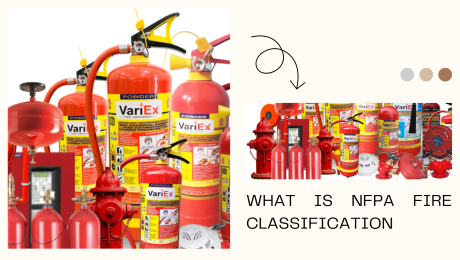A fire sprinkler is an automatic fire suppression system designed to detect and control fires in their early stages. Sprinklers are a key element in modern fire safety systems, often installed in commercial, industrial, and residential buildings to provide continuous, reliable protection. When a fire is detected, fire sprinklers release water or other extinguishing agents to control or extinguish the fire, reducing the risk of property damage, injury, or loss of life.
How Fire Sprinklers Work
Fire sprinklers are typically connected to a water supply system through a network of pipes that run throughout a building. Each sprinkler head is equipped with a heat-sensitive element, usually a glass bulb or fusible link. Here’s how they function:
Heat Detection: When a fire occurs, the temperature in the affected area rises. Once the temperature reaches a certain threshold (usually around 155-165°F or 68-74°C), the heat-sensitive element in the sprinkler head activates.
Water Discharge: When the glass bulb breaks or the fusible link melts, the sprinkler head opens, releasing water from the pipes above. The water is sprayed in a specific pattern to cover the affected area and suppress the fire.
Localized Suppression: Importantly, only the sprinkler heads directly affected by the heat will activate. This helps minimize water damage in other parts of the building, making fire sprinklers an efficient and targeted fire suppression system.
Types of Fire Sprinklers
There are various types of fire sprinklers, each designed for different environments and fire risks:
Wet Pipe Sprinklers: The most common type, wet pipe systems are filled with water at all times. When a sprinkler head is activated, water immediately flows to the fire.
Dry Pipe Sprinklers: These systems are used in areas where freezing is a concern, such as unheated warehouses. The pipes are filled with pressurized air or nitrogen, and the water is only released when a sprinkler head opens.
Pre-action Sprinklers: Pre-action systems combine elements of wet and dry systems and require two events to trigger water release: heat detection and activation of a separate alarm. These are often used in areas with high-value equipment, such as data centers or museums.
Deluge Sprinklers: These systems are used in high-hazard areas (such as chemical plants) and release large amounts of water simultaneously. Deluge sprinklers have open nozzles and are activated by a fire alarm system, not individual heat detection.
ESFR (Early Suppression, Fast Response) Sprinklers: Designed for high-ceiling areas, ESFR sprinklers discharge large volumes of water quickly to suppress fires in large spaces like warehouses or distribution centers.
Benefits of Fire Sprinklers
Early Detection and Suppression: Fire sprinklers are often the first line of defense, activating at the earliest sign of a fire and limiting the spread until firefighters arrive.
Property Protection: Sprinklers can significantly reduce fire-related damage by controlling or extinguishing fires quickly. This can minimize damage to both the building and its contents.
Life Safety: Fire sprinklers provide a critical safety feature for occupants, reducing the risk of injury or death by slowing the spread of fire and smoke.
Insurance Benefits: Many insurance companies offer discounts for buildings equipped with fire sprinkler systems, as they reduce the risk of large-scale damage.
Limitations
Installation Cost: While fire sprinklers can be cost-effective in the long run, the initial installation can be expensive, especially in large or complex buildings.
Water Damage: Although sprinklers are targeted, water discharge can still cause some water damage. However, the damage caused by fire is typically much more severe.
Maintenance: Regular maintenance and inspection of the sprinkler system are essential to ensure it functions properly in the event of a fire.
Applications
Fire sprinklers are used in various settings, including:
Commercial Buildings: Offices, retail stores, malls, and hotels.
Industrial Facilities: Factories, warehouses, and manufacturing plants.
Residential Buildings: Apartment complexes, multi-story buildings, and homes.
Specialized Environments: Data centers, museums, libraries, and hospitals where fire suppression must be quick and minimal in water damage.
Conclusion
Fire sprinklers are an essential component of fire protection systems, offering automatic, effective suppression of fires with minimal delay. They play a vital role in protecting lives, minimizing property damage, and providing peace of mind in both residential and commercial settings. Regular maintenance and proper installation are key to ensuring they work as intended when needed the most.
Are Fire Sprinkler Required In Isolation Hospital Bed
- Published in Fire Fighting System, Fire Safety Equipment, Fire Sprinkler System
Fire Fighting Equipment in Karnataka
Fire Fighting Equipment in Bengaluru
Fire Fighting Equipment in India
Best Fire Safety Products in India
Top Fire Safety Products in India
Best Fire Safety Products in Bengaluru
Top Fire Safety Products in Mumbai
Best Fire Safety Products in Mumbai
Fire Safety Products in Mumbai
Fire Safety Products in Karnataka
Fire Safety Products in Bengaluru
Fire Safety Product
What Is NFPA Fire Classification
What Is The Difference Between Fire Extinguisher And Fire Suppression System
- Published in Fire Extinguisher, Fire Fighting System, Fire Safety Equipment, Fire Suppression
- 1
- 2





